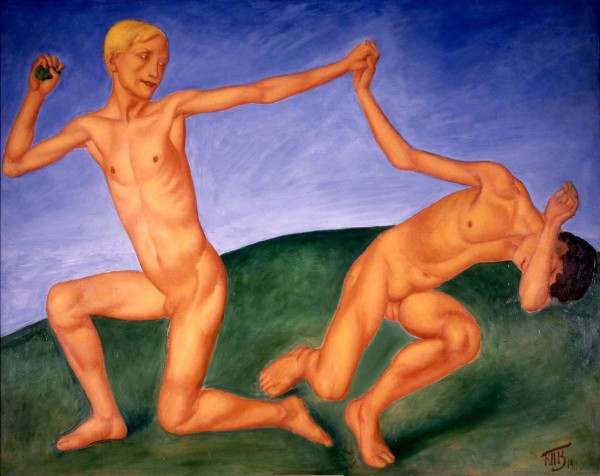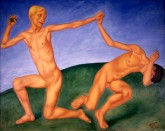Boys (Boys Playing)
1911
This work made an important contribution to Kuzma Petrov-Vodkin’s professional evolution. The intangible subject helped the artist to address and resolve the question of how to convey rhythm and motion in a painting. Inspired by the sight of two boys playing on a beach, the picture is distinguished for its genuine monumentality and powerful emotional impact. The canvas combines the aspirations towards an ideal harmony typical of Russian Neoclassicism in the 1910s and the artist’s own interest in seventeenth-century art, when Russian painting faced the dilemma of how to depict volume on a flat surface. For the first time, the artist formulates his personal “triochrome” principle of the three main earth colours yellow-red, green and blue. The grey days of modern life are contrasted to a romantic, timeless and eternally young world of irreal dreams, elevating the observed scene into an original, ritualistic pantomime. Conveyed with the help of the painterly plastics of the bodies and the rhythmic lines elastic and energetic or soft and rounded the differences in the characters and temperaments of the two boys are intensified by the bright colour contrasts.

